10 Most Expensive Paintings in the World
Art has always been a powerful medium for expressing human creativity, emotion, and culture. Some pieces, however, transcend the boundaries of time and value, becoming priceless treasures. In the world of fine art, a select few paintings have achieved extraordinary status, commanding astronomical prices at auctions and private sales.
In this article, we explore the 10 most expensive paintings in the world, each with its own remarkable story and legacy.
Salvator Mundi - Leonardo da Vinci

Salvator Mundi ranked first when it was purchased by Saudi Arabia's Crown Prince Mohammed bin Salman for $450.3 million (including taxes and fees) at Christie's in November 2017, 4.5 times the predicted price. Created by Leonardo da Vinci around 1500, the work depicts Jesus dressed in a classic blue robe, making the sign of the cross with his right hand and holding a transparent crystal ball in his left hand - symbolizing the "celestial sphere" of the heavens. Alan Wintermute - Christie's senior specialist in pre-19th century painting - compared the work to discovering a new planet. "Salvator Mundi is the Holy Grail of pre-19th century masters. It is like a mystical dream, unattainable until now," he said.
The painting was once in the collection of King Charles I of England. After many historical events, it reappeared in the 19th century in England, badly damaged. The painting was sold at Christie's auction house in 1958 for $60, making it the only Da Vinci work in private ownership.
Though widely believed to be a genuine work of Leonardo, some art historians have raised questions about the extent of his involvement, with suggestions that parts may have been completed by his workshop or other artists. Despite this, Salvator Mundi remains an iconic work, both for its artistic merit and its captivating journey through history, which includes centuries of obscurity, rediscovery in 2005, and extensive restoration.
Regardless of the debates, Salvator Mundi continues to fascinate art lovers and collectors, standing as a testament to the enduring power of da Vinci’s legacy.
Interchange - Willem de Kooning
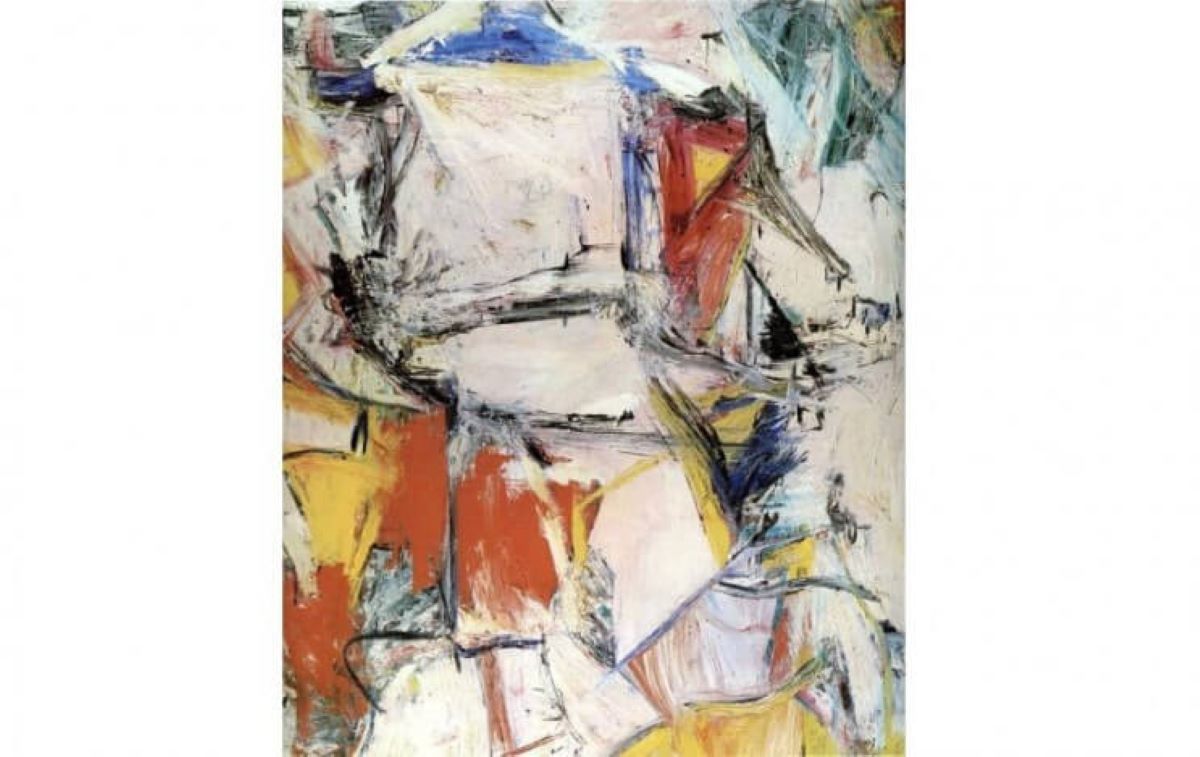
Willem de Kooning's abstract painting Interchange ranked second at $300 million. According to Bloomberg, the work was purchased by collector and hedge fund tycoon Ken Griffin from billionaire David Geffen in September 2015.
Interchange, also known as Interchanged, is a groundbreaking abstract expressionist oil painting on canvas created by Dutch-American artist Willem de Kooning in 1955. This monumental work is renowned for its bold colors, energetic brushstrokes, and complex interplay of forms. The painting is seen as a pivotal moment in his career, marking his shift from figuration to more abstract compositions.
The painting, which measures 200.7 x 175.3 cm depicts a woman sitting on a chair in an abstract style. Interchange was inspired by de Kooning’s fascination with the human form and the fluidity of landscapes, blending the two in a visually striking manner. The canvas pulsates with energy as shapes seem to emerge and dissolve, creating a sense of movement and transformation. It’s a vivid representation of the chaotic yet beautiful interplay of colors and forms that define de Kooning's work.
According to Artnet, the work is a groundbreaking masterpiece and has a great influence on abstract expressionism. The artist sold the painting to a gallery right after completion for $4,000, and it changed hands many times. Interchange is currently on loan to the Art Institute of Chicago.
Willem De Kooning (1904-1997) is a Dutch painter, a representative of the Abstract Expressionist school. He ranked ninth in the "Top 10 Greatest Painters of the 20th Century" published by The Times magazine in 2009.
The Card Players - Cézanne
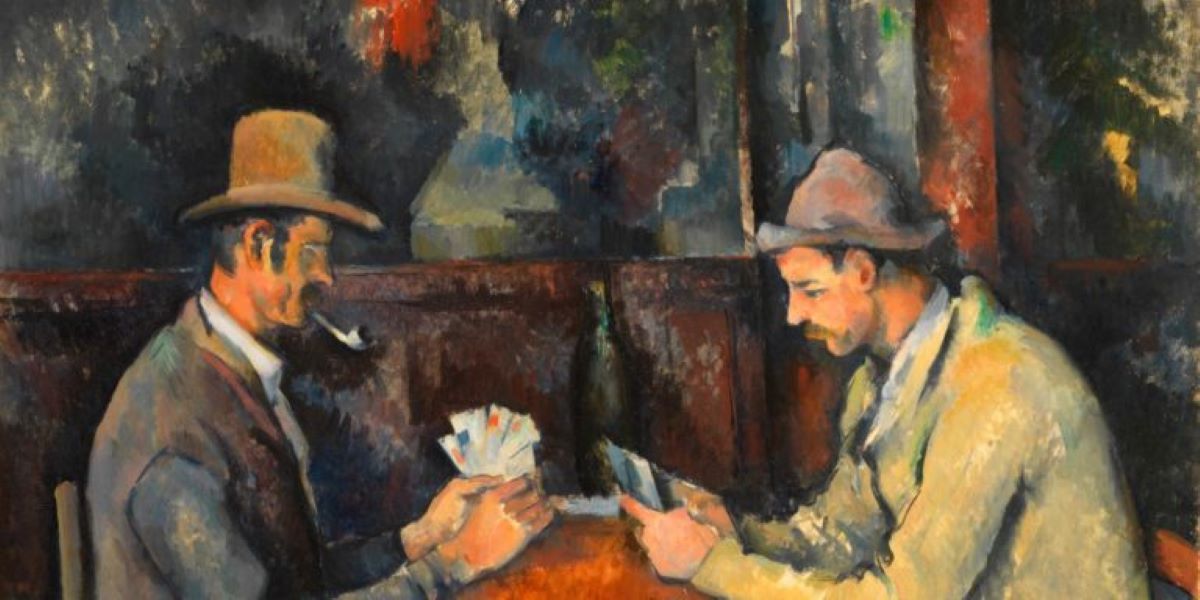
The third most expensive place is The Card Players worth $250 million. According to Vanity Fair, the Qatari royal family bought the work in 2011 in a secret transaction. The Card Players is one of Cézanne's five card-playing paintings - the most important works of the Post-Impressionist school.
The oil painting was created in 1890, depicting two men in Aix-en-Provence (France) playing cards. The work is a perfect combination of geometry and art. Cézanne uses color to analyze the object, shape, and perspective. The Card Players is simple and still but still has depth to the scenes.
This painting has the power to immerse the viewer in a quiet. The Card Players is the author's expression of his fascination with rural life as well as his exploration of form, color, and perspective.
Cézanne is a French genius, considered a bridge between 19th-century Impressionism and 20th-century Cubism. He was called "the father of us all" by Picasso.
Nafea faa ipoipo? (When will you marry?) - Paul Gauguin
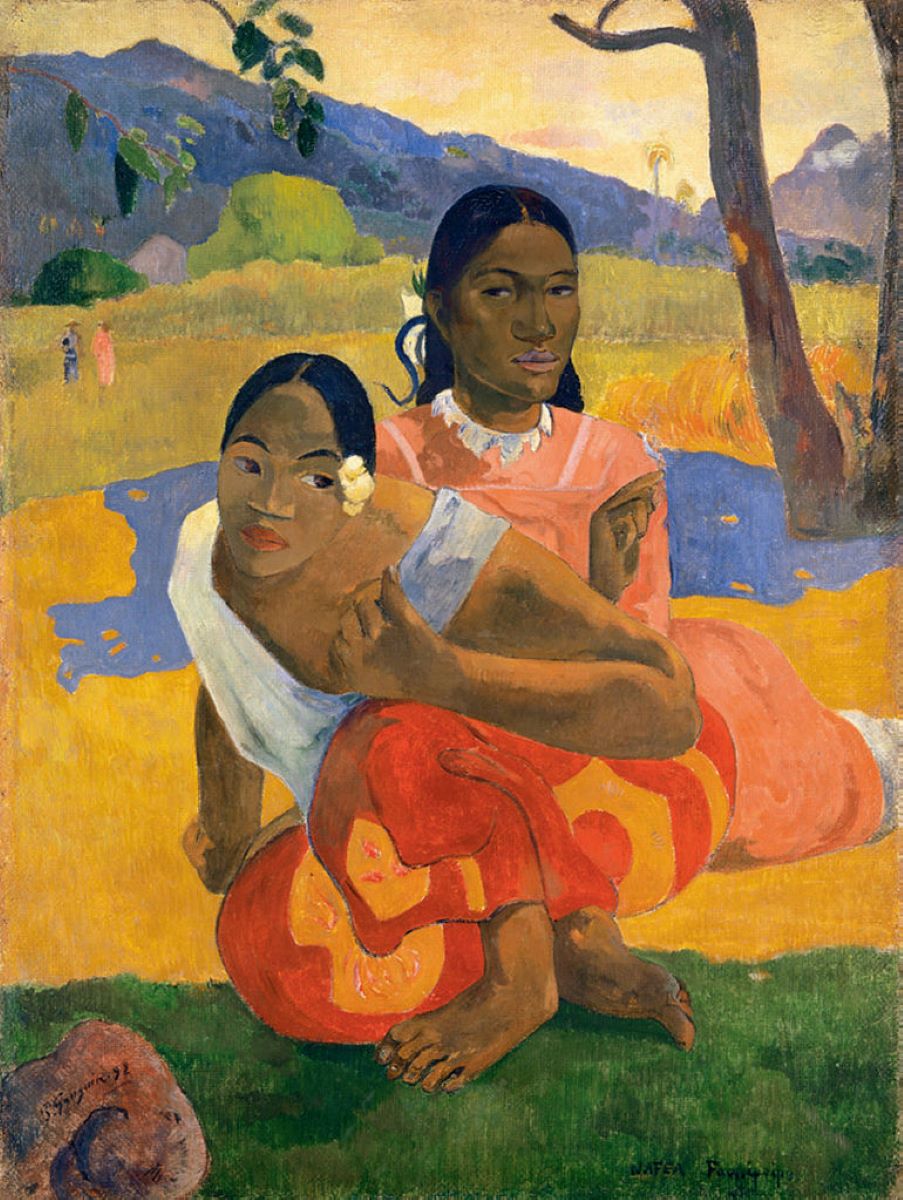
Nafea faa ipoipo? (When will you marry?) ranked fourth with a price of 210 million USD. According to the New York Times, in 2015, international media reported that the painting was sold by Rudolf Staechelin - former CEO of Sotheby's - to a Qatari buyer for nearly 300 million USD. However, the disputed court in July 2017 showed that the work was sold for 210 million USD in 2014, 90 million USD lower than the initial report.
In 1891, French artist Paul Gauguin came to Tahiti to find inspiration. He spent two years traveling around the country and painting landscapes with indigenous women. Nafea faa ipoipo? was painted in 1892 in oil, depicting two young women sitting in a meadow. The woman in the front is wearing a traditional Tahitian dress with flowers in her ears to signify that she is looking for a husband. The woman in the back is wearing a modest, Western-style dress.
The painting exemplifies Gauguin’s signature style. In this masterpiece, we can see bold colors, flattened forms, and an almost dreamlike quality. His use of bright yellows, greens, and blues brings the landscape to life, while the women's calm and enigmatic expressions convey a sense of mystery. Gauguin was deeply inspired by what he perceived as the “untouched” and exotic beauty of Tahiti. His works from this period often romanticized the island's culture despite the colonial realities they encountered.
No. 17A - Jackson Pollock
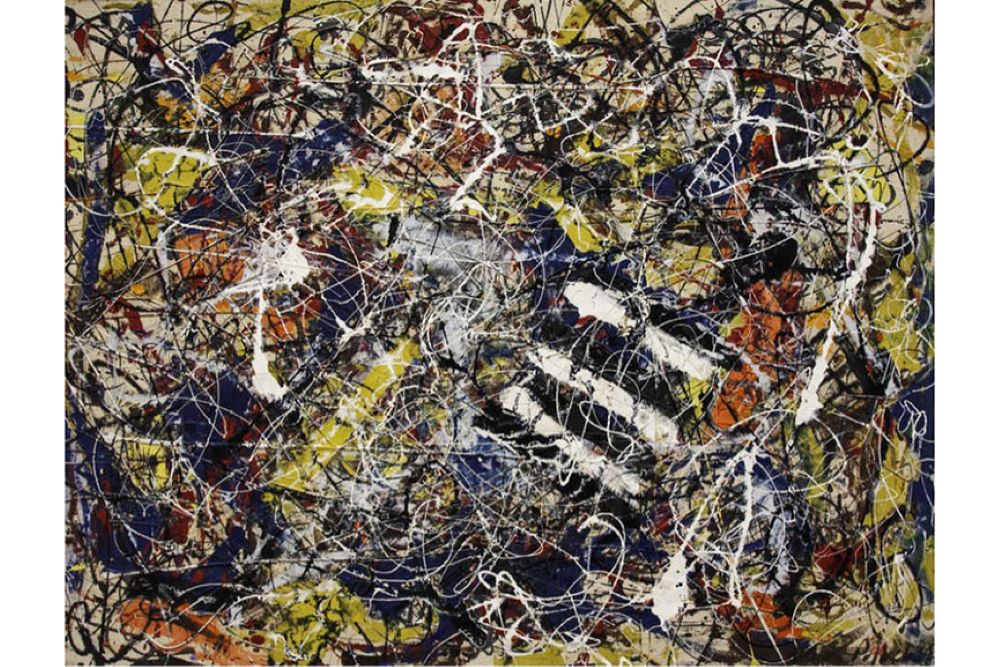
Ranked most expensive fifth is No. 17A by American artist Jackson Pollock for $200 million. The painting was purchased by collector and hedge fund tycoon Ken Griffin at the same time as Interchange.
No. 17A was created in 1948, measuring 112 x 86.5 cm, and is an oil painting on fiberboard, using the drift painting technique. Pollock stand out with his unique "drip painting" technique, where he would pour, splatter, and drip paint onto a horizontal canvas, creating a sense of raw energy and movement. No. 17A exemplifies this signature style with a chaotic yet harmonious mix of swirling lines, splashes of color, and abstract forms that seem to dance across the canvas.
This painting is part of Pollock’s broader body of work during the peak of his career when he became a leading figure in the Abstract Expressionist movement. Pollock's technique was revolutionary, as it broke away from traditional methods of painting and emphasized the process of creation itself. The composition of No. 17A is dense and layered, inviting viewers to experience the emotion and spontaneity of the artist’s gestures. The work is also on loan to the Art Institute of Chicago.
Jackson Pollock (1912-1956) was a prominent artist of the Abstract Expressionist school. He ranked seventh in the "10 Greatest Painters of the 20th Century" published by The Times in 2009. Pollock died at the age of 44 due to a traffic accident.
Number 6 (Violet, Green and Red) - Mark Rothko
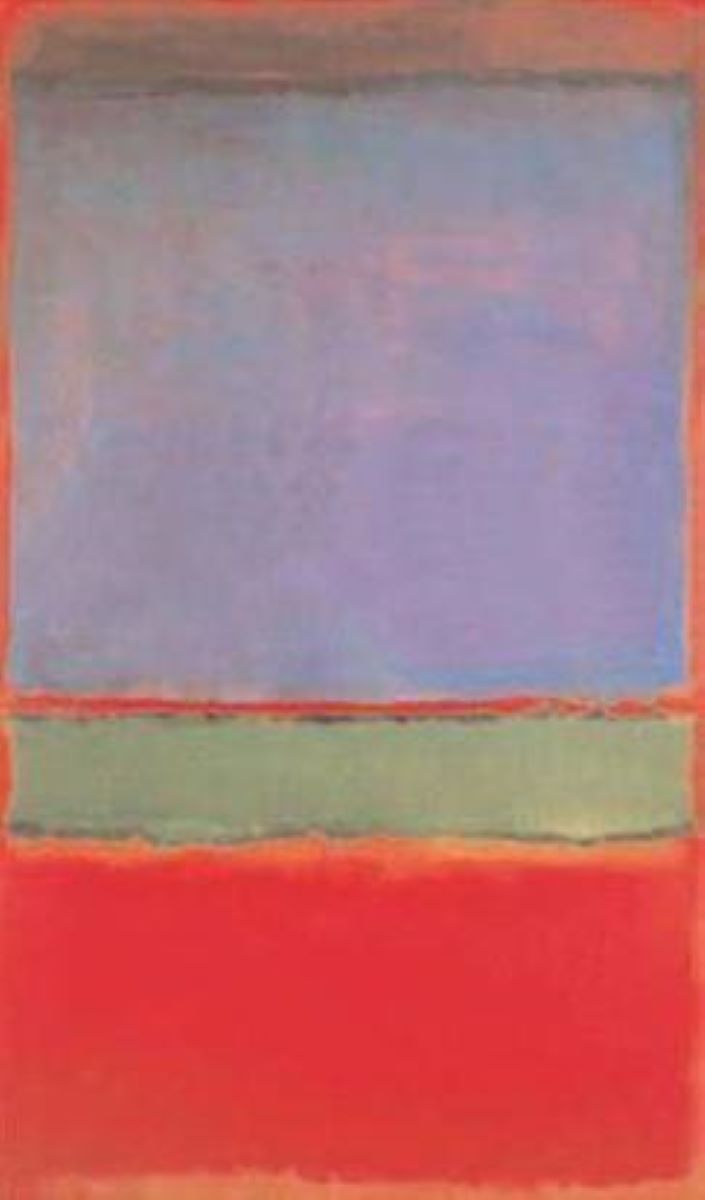
Standing at number six is Mark Rothko's Number 6 (Violet, Green and Red) for $186 million (including taxes and fees). The painting was bought by Russian billionaire Rybolovlev from French winemaker Christian Moueix and his wife in 2014 through broker Bouvier.
The 1951 painting consists of three uneven streaks of purple, green and red, stacked on top of each other with soft edges. The work is typical of Mark Rothko's abstract art style. According to Arthive, the artist's special painting technique helps the work achieve the effect of depth and emits light from within. The soft, fading edges create the feeling that the painting has no boundaries. The artist uses color blocks and spatial depth to attract viewers to dialogue with the work.
Rothko’s works are known for their simplicity in form yet complexity in mood. Number 6 is not just about the colors themselves but the way they interact and create a contemplative atmosphere. His use of color was meant to transcend mere aesthetic beauty, drawing viewers into a more emotional, almost spiritual experience. Rothko believed that art should evoke deep feelings, and his color field paintings, with their subtle gradations and monumental scale, were meant to connect with viewers on an intimate, emotional level.
Water Serpents II - Gustav Klimt
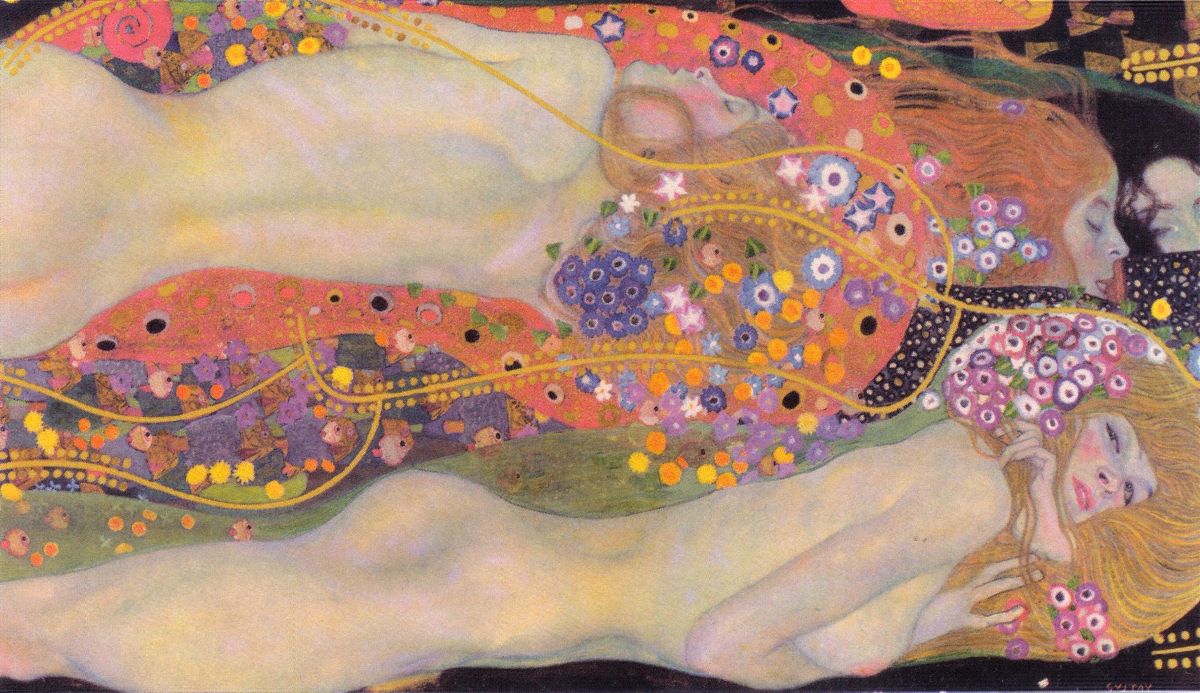
Gustav Klimt's Water Serpents II was the seventh most expensive at $183.8 million. The oil painting painted between 1904 and 1907, depicts several women lying on a canvas.
Mymodernmet said the painting displays Klimt's signature: sensual portraits of the female body and abstract motifs. It is part of Klimt’s celebrated "golden phase," where he used gold leaf to enhance his compositions. The painting, rich in intricate detail and sensual imagery, showcases Klimt’s signature blend of symbolism, eroticism, and decorative elements, all tied to his fascination with mythology and the female form.
Water Serpents II portrays a group of nude, intertwined women submerged in an otherworldly aquatic environment with fluid, sinuous bodies that seem to blend into the water. The composition is imbued with an ethereal quality, and the serpentine figures evoke a sense of both beauty and mystery. Klimt's use of gold and vibrant colors creates a shimmering, dreamlike atmosphere, while the flowing patterns and textures heighten the sense of movement within the water.
Thematically, the painting explores femininity, sensuality, and the connection between women and nature. The water serpents, or nymphs, are mythological creatures often associated with seduction and danger, adding a layer of mysticism to the painting. The rich ornamentation, intricate designs, and careful attention to detail are hallmarks of Klimt’s work, making Water Serpents II a masterpiece of the Art Nouveau style.
During World War II, the Nazis took the painting from a Jewish woman named Jenny Steiner. The work was then kept by the family of Gustav Ucicky - Klimt's son - until 2012 when it was auctioned. Due to its historical nature, the proceeds were divided between the Ucicky and Steiner families.
Gustav Klimt (1862-1918) ranked third on The Times' list of "10 Greatest Artists of the 20th Century." He is considered a prominent figure of the Symbolist school, mainly painting female figures, exploiting their sexiness, whether in modest clothing or nude.
Portraits of Maerten Soolmans and Oopjen Coppit - Rembrandt
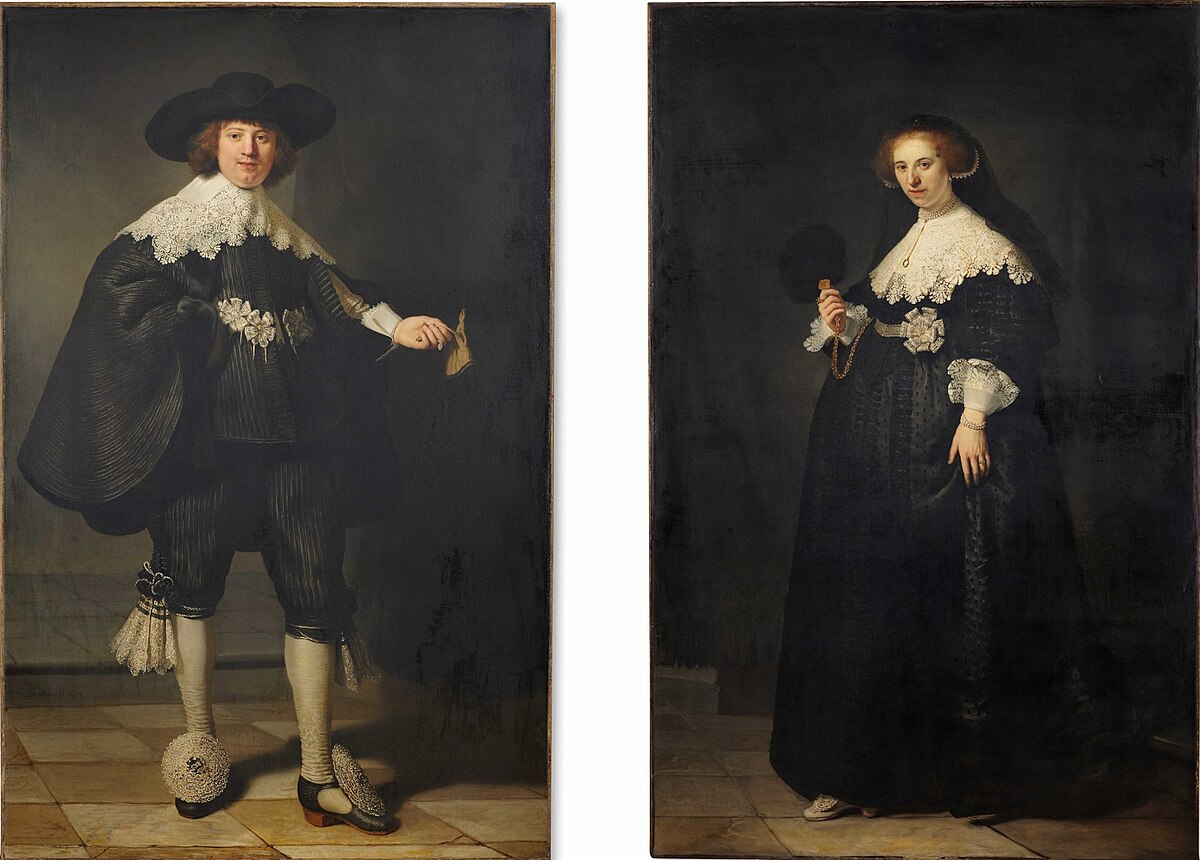
Portraits of Maerten Soolmans and Oopjen Coppit ranked eighth with a price of 180 million USD. The work was purchased by two museums, the Rijksmuseum (Netherlands) and the Louvre (France) in February 2016 for display.
The portraits were commissioned to mark the marriage of Maerten Soolmans, the son of a wealthy merchant, and Oopjen Coppit, the daughter of a prominent Amsterdam family. The two portraits are meant to be viewed together, with Maerten and Oopjen standing in similar poses, facing each other in their luxurious attire. Both figures are depicted in full-length, a format that was rare at the time, symbolizing their high social status. Rembrandt captures the rich textures of the clothing - Maerten’s elegant black silk attire and Oopjen’s lavish dress, adorned with lace and pearls.
Despite their formal poses, the couple is portrayed with a sense of individuality and warmth, a testament to Rembrandt's mastery of depicting character and expression.
Les Femmes d'Alger (version O) - Picasso
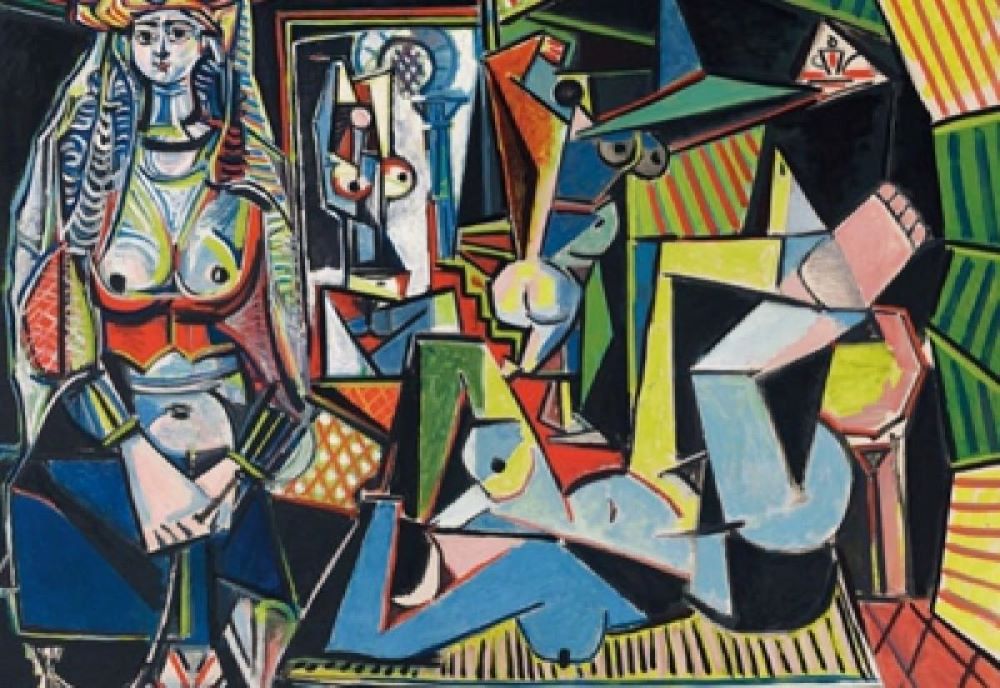
Les Femmes d'Alger (version O) ranked most expensive ninth at $179.4 million, sold at Christie's in May 2015. The buyer was former Qatari Prime Minister Hamad bin Jassim bin Jaber Al Thani.
The work was painted by Picasso in 1955, depicting topless women in a room with different angles and shapes in the style of cubism. Olivier Camu - Vice President of Christie's - commented "The composition is framed, composed in cubism, perspective, intense colors create a wonderful overall. This is one of the most famous masterpieces of the artist."
Les Femmes d'Alger is the last of 15 paintings Picasso created between 1954 and 1955, inspired by Eugène Delacroix's Femmes d'Alger dans leur appartement (The Women of Alger in Their Apartment), painted in 1834.
In Les Femmes d'Alger (Version O), Picasso reimagines the sensual, exotic women of Delacroix’s original painting with bold, fragmented forms typical of his later Cubist phase. The composition is vibrant, with a palette of vivid reds, oranges, and blues that give the painting an intense energy. The figures are depicted in a highly stylized manner, Picasso breaking down their forms into geometric shapes and intertwining lines, simultaneously representing multiple perspectives. The work is a complex interplay of abstraction and figuration, combining Picasso’s mastery of color, form, and emotional intensity.
The Les Femmes d'Alger series was a reflection of his obsession with the female form and his continued exploration of themes like sexuality, death, and creativity. The series marked a significant period in Picasso’s career when he was drawing inspiration from both his artistic predecessors and contemporaries.
This painting remains a testament to Picasso’s genius and his ability to reinvent classical themes through his modernist lens, merging historical references with groundbreaking artistic techniques. Les Femmes d'Alger (Version O) is widely regarded as one of his most significant and valuable works.
Nu Couché (Reclining Nude) - Amedeo Modigliani
The 10th painting is Nu Couché (Reclining Nude) by Amedeo Modigliani - auctioned for $170.4 million at Christie's in New York in November 2015. Chinese billionaire Liu Yiqian bought the painting to display at a private museum in Shanghai.
Nu Couché (Reclining Nude) is one of the most famous and sensual paintings by Italian modernist artist Amedeo Modigliani. Completed in 1917–1918, it stands as a masterpiece of 20th-century art, its graceful depiction of the female form and Modigliani’s signature style, which combines elongated proportions with a smooth, flowing aesthetic. The painting portrays a reclining nude woman, her body stretched across a deep red couch, with her gaze directly engaging the viewer, exuding both confidence and intimacy.
Modigliani was deeply inspired by classical art and the nudes of the Renaissance, yet he reimagined them through his modernist lens, focusing on simplicity, elegance, and emotional depth. In Nu Couché, he eschews excessive details in favor of soft, fluid lines that define the contours of the woman's body. The painting’s color palette, dominated by warm flesh tones and rich reds, adds a sense of warmth and sensuality to the composition. Unlike the idealized or modest depictions of nudes in traditional art, Modigliani’s subject is unapologetically modern, portraying the woman as empowered, with an assertive presence that was revolutionary at the time.
The Nu Couché series, of which this painting is a part, was exhibited at Modigliani’s only solo show in Paris in 1917. The display of these nudes caused a public scandal, leading to the exhibition being temporarily shut down by police for its provocative content. However, today the series is celebrated for its boldness and beauty, and it remains one of Modigliani’s most iconic contributions to art.
Enhance your expertise with Skilltrans through their curated selection of related courses. Please click on the course name below to learn more:
Cartoon Drawing For Absolute Beginners
You will learn how to draw cute cartoon characters. Also, you will learn how to draw simple cartoon backgrounds. We’ll start with the basics. For example whats the anatomy of our cute cartoon characters and what shapes we’ll use to draw them. Then we’ll jump into different facial expressions so that you can express emotion with your characters. Also different hairstyles, a lot of practice sheets, and many more.
Drawing and Colouring: Birds and Flowers (Art as Meditation)
Nature influences art in many we can't imagine art without nature. As it is the source of inspiration for every artist, its the best way to start learning art through nature. Its a kind of meditation in which we relate ourselves with the beauty of nature. When you indulge yourself in activities related to nature you feel calm and relaxed.
In this course you will learn to make beautiful leaves, flowers and exotic and beautiful birds which will not only enhance your painting.
Character Art School: Complete Coloring and Painting
Character Art School is a 6 week learn-anywhere video course where you learn to become adept at coloring and painting professional characters. I’ve hand-crafted the Character Art School: Complete Coloring and Painting course to be the only course you need, to learn all the core fundamentals and advanced techniques to coloring and painting characters well. If you’re an absolute beginner or you’re already at an intermediate level, the course will advance your current ability to a professional level. The course is a comprehensive 5 module guided video course, where the only limit to your progression is your determination and engagement in the rewarding assignments.
Conclusion
The world’s most expensive paintings represent more than just extraordinary prices - they are reflections of artistic genius, cultural significance, and the evolving tastes of collectors. As art continues to be traded at record-breaking sums, these masterpieces remind us of the enduring power and influence of great art on society and the global market.
To delve deeper into different aspects of art, you can sign up for Skiltrans courses. We are always ready to welcome you to the magical and unique world of art.

Meet Hoang Duyen, an experienced SEO Specialist with a proven track record in driving organic growth and boosting online visibility. She has honed her skills in keyword research, on-page optimization, and technical SEO. Her expertise lies in crafting data-driven strategies that not only improve search engine rankings but also deliver tangible results for businesses.



